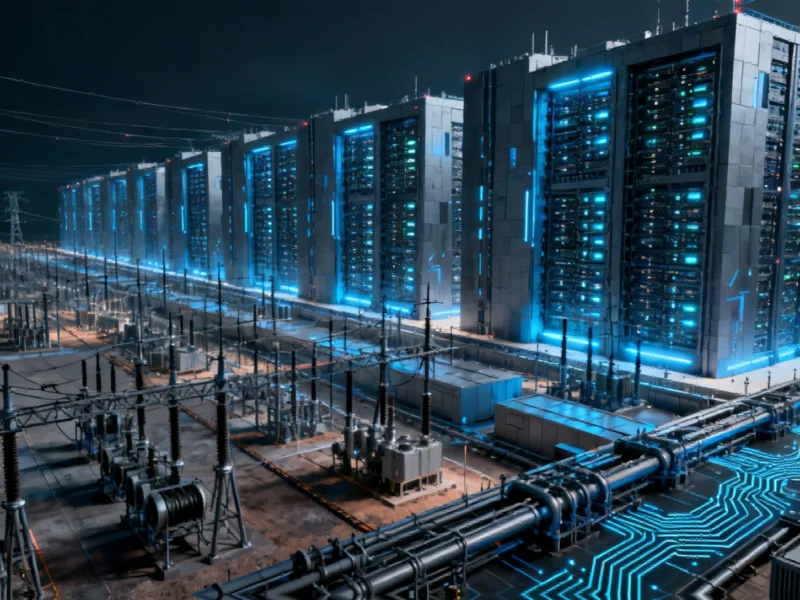The Scale of OpenAI’s Ambitious Stargate Initiative
OpenAI’s Stargate project represents one of the most ambitious infrastructure undertakings in the history of computing. With a projected cost of $500 billion and energy requirements equivalent to powering a major metropolitan area, this initiative is poised to redefine the boundaries of artificial intelligence capabilities. The staggering scale of investment and resource allocation underscores the transformative potential that OpenAI and its partners see in next-generation AI systems.
According to recent detailed reports on OpenAI’s infrastructure plans, the project will ultimately require approximately 10 gigawatts of power—enough to supply electricity to a city the size of New York City, which consumes about six gigawatts. This energy demand highlights the immense computational resources needed to train and operate increasingly sophisticated AI models.
Strategic Data Center Locations and Infrastructure
OpenAI has strategically selected multiple sites across the United States to host its expanding data center network. The identified locations include Shackelford County, Texas; Doña Ana County, New Mexico; Lordstown, Ohio; Milam County, Texas; and an undisclosed Midwest site. These join the company’s existing flagship facility in Abilene, Texas, creating a distributed computational backbone.
The geographical diversity of these sites reflects careful planning around several critical factors: access to renewable energy sources, favorable climate conditions for cooling, availability of land, and regional power grid capacities. This distributed approach also provides redundancy and resilience against regional disruptions.
The Broader Context of AI Infrastructure Expansion
OpenAI’s massive investment is part of a broader trend among technology giants racing to build computational capacity. Hyperscalers including Meta and Microsoft have significantly increased capital expenditure to support AI development, with OpenAI alone securing deals worth approximately $1 trillion for 2025. This unprecedented spending reflects the industry’s conviction that AI capabilities will drive the next era of technological and economic advancement.
As these industry developments continue to unfold, the competition for engineering talent and resources intensifies. The scale of investment required is creating new dynamics in technology labor markets and infrastructure development.
Energy Implications and Sustainable Solutions
The energy requirements of advanced AI systems represent one of the most significant challenges facing the technology sector. Research from RAND projects that global data center demand could reach 68 gigawatts by 2027 and 327 gigawatts by 2030—figures that dwarf current consumption patterns.
This massive energy need is driving innovation in power generation, particularly in the realm of recent technology focused on sustainable solutions. The development of fusion power and other advanced energy technologies has become increasingly urgent as AI infrastructure expands.
Economic and Technological Ripple Effects
The Stargate project’s economic impact extends far beyond direct construction and operational costs. The initiative is catalyzing advancements in multiple sectors, from semiconductor manufacturing to cooling technologies and power distribution systems. These market trends are reshaping investment patterns and technological priorities across the global economy.
OpenAI CEO Sam Altman has emphasized that Stargate represents not just an infrastructure project but a fundamental enabling platform for AI capabilities that don’t yet exist. The scale of investment reflects the company’s conviction that future AI systems will require orders of magnitude more computational resources than current models.
Future Implications and Industry Trajectory
The Stargate initiative signals a new phase in AI development where computational scale becomes a primary differentiator. As AI models grow more sophisticated, the infrastructure required to train and deploy them is becoming increasingly central to technological competitiveness.
This expansion is also driving related innovations in digital infrastructure and ownership models. The convergence of AI, energy, and computational resources is creating new paradigms for how technology ecosystems are structured and operated.
The $500 billion Stargate project represents more than just an infrastructure investment—it’s a bold statement about the future trajectory of artificial intelligence and its foundational requirements. As these computational behemoths take shape, they will undoubtedly reshape not only what AI can accomplish but also how we power and support the digital infrastructure of tomorrow.
This article aggregates information from publicly available sources. All trademarks and copyrights belong to their respective owners.



